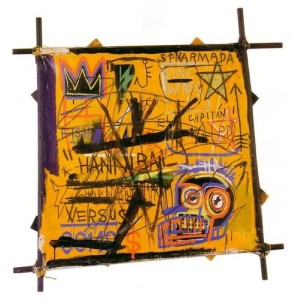A couple of months ago, authorities in New Jersey seized over two thousand works of art appraised at nearly $16 million from an 18-wheeler coming from Houston, Texas. Mostly photographs by masters such as Alfred Stieglitz and Edward Weston, the works were intended to be shipped to Spain, where Texas businessman Philip Rivkin, CEO of Houston-based Green Diesel, is now thought to be.
The U.S. Attorney’s Office alleges the artwork was purchased with money collected in a scheme that sold fake credits for renewable energy. The complaint seeks to force the owner to forfeit the works in an attempt to recoup some of the $78 million that authorities allege Green Diesel got from defrauding companies like Exxon, Shell, and Mobil, although Rivkin has not yet formally been charged with a crime.
This story is only one of the examples given in yesterday’s New York Times article about how easy it is to use art to launder illegal money. Another example from a few years ago is used in the dramatic opening paragraph of the article:

Seized painting: Hannibal, 1982, Jean-Michel Basquiat
According to the air bill slapped on the crate that arrived at Kennedy International Airport from London, an unnamed painting worth $100 was inside. Only later did federal investigators discover that it was by the American artist Jean-Michel Basquiat and worth $8 million.
It’s enticingly cinematic to envision some low-level, but art-savvy Customs drone pulling out his crowbar, cracking open a crate, glimpsing the unmistakable brushstroke of the 1980s neo-expressionist graffiti genius and alerting his superiors to what would turn out to be part of a massive money-laundering scheme perpetrated by former Brazilian banker Edemar Cid Ferreira, accused of a billion-dollar fraud—but, apparently, it’s just not that easy.
Customs officials do crack open a small percentage of shipped artworks and some of those officials might be art-savvy, but the scenario is incredibly unlikely. “It was probably Brazil who asked the US to keep an eye out for shipments from Ferrieira,” says Dale Wilson, a Houston contemporary art collector/enthusiast and former US Customs official. According to Wilson, if there weren’t the false Customs declaration (the $100 declaration versus the $8 million value), there wouldn’t be a lot the feds could do in support of Brazil’s claim because, technically, a US law would not have been broken. “Once you get caught up in Customs, though, “ he states, “all bets are off. “ When in customs, it gives time for anyone to come in and dig around: the Treasury, the FBI, Homeland Security, and foreign governments.
“It’s funny,” says Wilson. “If he would’ve just claimed the $8 million, Customs probably wouldn’t have touched it for fear of damaging it.” And Brazilian officials wouldn’t have much of an international legal leg to stand on.
Sideline: Dale Wilson worked for US Customs many years, as supervisor of the art and antiques team and, later, as supervisor of the commercial fraud team. Having taken an art history class in college, he early on volunteered his services to area museums (on-site Customs inspections, under the safe supervision of museum registrars and saving time at Customs inspection sites). He wasn’t taken up on his offer until, one day, a local customs official didn’t understand the “soft” before “soft sculpture” and vigorously dug past the packing material and into the felt, looking for the figurine beneath it, which was destined for a local major museum. After that incident, Wilson got invited to some museums to officially open crates, where he viewed many rarely-seen storage room gems and met the associated curators and scholars. Thus, an art lover was born!


